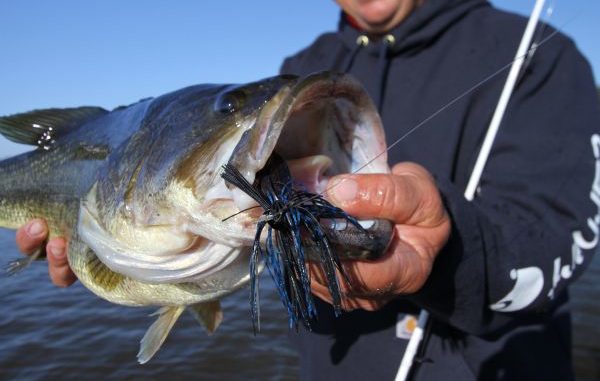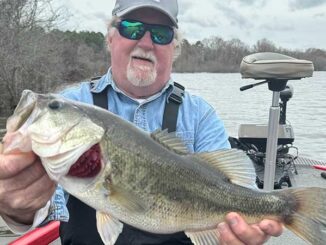
Fishing guide Darold Gleason follows a simple yet effective plan of covering water with reaction baits to locate active areas.
Once he finds a promising spot, he’ll slow down and pick it apart.
Here are his top tools:
• Spin to win — Gleason favors a 3/8-ounce white or chartreuse/white spinnerbait.
In heavily stained water, he likes a Colorado and willow blade combination. In scenarios of extremely stained water he’ll make sure both blades are copper-colored because they put off more flash than nickel blades.
“If I’m around really big fish, I’ll tip my spinnerbait with a 3½-inch V&M Thundershad Jr. swimbait,” Gleason said. “This just adds more bulk and vibration to the spinnerbait. I’ll use a white swimbait, and I’ll spray-dye the tail chartreuse.
“I mostly do this in lakes like Toledo Bend, where I’m around really big fish. In places like the Red River or Atchafalaya Basin, where it’s more numbers than really big ones, you probably wouldn’t do that.”
• Getting Cranky — Gleason likes a 6th Sense Lures Crush 50, which dives 2 to 4 feet deep. He’ll go with chartreuse/black because he believes the bait’s contrast ensures fish can find the lure.
“This bait eliminates two of the key factors — I don’t have to worry if a fish can see it or feel it,” Gleason said. “That squarebill vibrates and moves a lot of water so the fish can feel that around cover. Also, I know they’re going to see chartreuse and black.
“That tells me that if I’m throwing that bait in muddy water and not catching them, then I’m not around them.”
• Flipping out — If he’s on good stretch of brush or laydowns, Gleason’s go-to bait is a ½-ounce V&M Pacemaker Adrenaline jig with a V&M Wild Thang Craw Jr.
Gleason said he likes flipping jigs in muddy water because the skirt adds bulk.
“It’s easier for fish to feel something in the water around them,” he explained. “When I’m flipping a jig in muddy water, I’m really looking for fish that are nosed up tight to hard targets like wood, laydowns or buck brush in shallow water.
“A jig is a good way to get in there precisely and put it right in front of their heads.”
It’s all about providing bass with something they can find even when visibility is limited.
“When I’m trying to define what bait I’m going to use, I want something that’s going to move water so they can feel it through their lateral line,” Gleason said. “You also want something that’s going to put off a lot of vibration, so that’s why a little squarebill crankbait is really good. I’m usually flipping after I’ve located them.”


